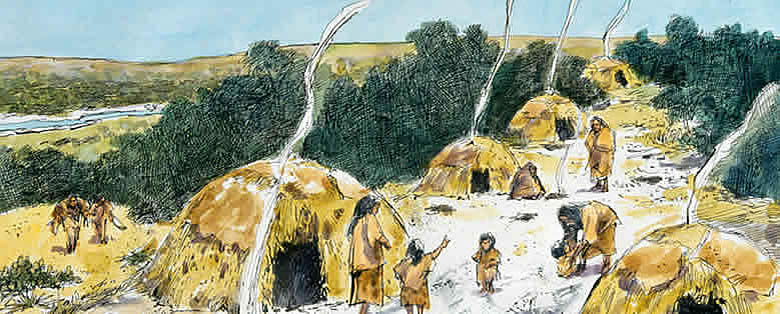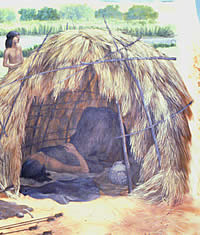Wickiups: Sturdy but Temporary Structures




Wickiups were homes to hunting and gathering peoples who moved from place to place, sometimes staying perhaps a few days or several weeks in one location. Their homes were easy to construct from wooden sticks and brush found at each campsite. Whereas tipis were tall and cone-shaped, wickiups were short and squat. But unlike tipis, which were taken apart and moved from place to place, wickiups were just left behind when Indian families moved on.
These small, round houses were made of thin, flexible pieces of green wood bent to create a dome. Small branches were wrapped around the dome to make a grid. In cool weather, animal hide or thatch was used to cover the frame, sometimes only on one side to block the north wind. A small firepit was dug in the middle of the wickiup. Wickiups were much smaller than the thatch houses of the Caddo and only a few people could sleep in one.